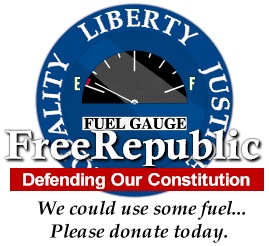Homes which are at low risk of natural disasters are rising in value faster than properties in high risk areas for the first time in almost 15 years.
That is according to fresh data from Redfin, which found that this year marked the first time this has happened since 2010.
The research found that homes facing low risk of extreme heat, floods and fires all rose in value faster than properties which faced a high threat of these natural disasters.
'The fact that this is happening across risk types - and thus, across the country - is some of the best evidence we have that climate change is impacting people's homebuying decisions,' said Redfin senior economist Elijah de la Campa.
It comes as climate disasters are intensifying in many areas across the US.
Three major hurricanes - Debby, Helene and Milton - tore through Florida this year, killing hundreds of people and destroying thousands of homes and businesses.
The threat of these disasters has meant the Sunshine State is facing an escalating housing crisis, as desperate owners are trying to flee and home sales are plummeting in many major cities.
Hurricane Milton also wreaked havoc across Georgia, Tennessee and the Carolinas earlier this year, exposing devastating home insurance gaps for millions of Americans.
Destroyed and damaged buildings in the aftermath of Hurricane Helene on October 8, 2024 in Bat Cave, North Carolina
'With climate catastrophes becoming increasingly frequent and calamitous, many people have decided they don't want to live in risky areas,' said de la Campa.
'And with insurance costs skyrocketing, many risky areas that were once affordable have become prohibitively expensive.
'The reality of climate change is setting in and it's causing a reckoning; people are putting disaster risk higher on their list of considerations when looking for a home.'
According to Redfin, the total value of US homes facing a low risk of extreme heat is up 7 percent year over year to $17.7 trillion.
That is compared to a 6.3 percent increase in value - to $29.7 trillion - of properties at high risk of extreme heat.
Homes with a low flood risk, meanwhile, have risen 6.7 percent year over year to $40.2 trillion.
Those with a high risk of flooding are up 6 percent in value to a total of $7.2 trillion.
Low fire risk properties have gained 6.6 percent in value over the last year - reaching a total of $39 trillion - while high fire risk homes are up 6.4 percent in value to $8.4 trillion.
While these differences are small, they are notable, Redfin said.
Three major hurricanes tore through Florida this year, killing hundreds of people and destroying thousands of homes and businesses (Pictured: A Vero Beach resident in the aftermath of Hurricane Milton)
Homes facing low risk of extreme heat, floods and fires all rose in value faster than properties which faced a high threat of these natural disasters (Pictured: Floodwaters remaining from Hurricane Helene in Swannanoa, North Carolina)
'With climate catastrophes becoming increasingly frequent and calamitous, many people have decided they don't want to live in risky areas,' said Redfin senior economist Elijah de la Campa
One reason the value of low-risk homes is rising faster than the value of high-risk homes is that Florida and Texas - which both face high natural disaster risk - have seen among the slowest home value growth in the nation over the last year, while also building more homes than anywhere in the country.
In some areas, including hurricane-prone parts of Florida, the slow property value growth is likely due to natural disaster risk itself.
But rising homeowner's association (HOA) fees, increasing insurance costs and new condo regulations have also hurt demand.
Recent shifts in where Americans are choosing to live also indicates that homeowners may be becoming more responsive to climate risk, the real estate company said.
High fire-risk areas in California saw more people leave than move in last year, it found, in a reversal from last year.
The latest analysis is based on climate-risk scores from Redfin and climate risk financial modeling company First Street for roughly 93 million US residential properties as of June 2024.
Roughly 58 million US homes face high heat risk, while roughly 15 million face high fire risk and around 13 million are at high risk of flooding.
Some homes face more than one type of risk.
Smoke billows from a fire near homes in Rancho Santa Margarita, California on September 9, 2024
A destroyed home in the aftermath of Hurricane Milton in Port St Lucie, Florida
While climate risk has become a top consideration for some house hunters, that is certainly not the case for everyone.
There are still more people moving into than out of disaster-prone America as a whole, said Redfin, which is one reason home values in disaster-prone areas continue to climb.
The value of the American housing market skyrocketed during the pandemic as fierce homebuying demand - driven by record-low mortgage rates - caused buyers to bid up values.
Some of the fiercest competition occurred in the Sun Belt, as the region's relatively affordable housing attracted many homebuyers from more expensive states.
But the Sun Belt is also home to many places prone to natural disasters, including Florida, Arizona and Texas.
Home values in disaster-prone areas continue to rise in part because there is still demand in those areas, and because many of those areas are relatively affordable compared to other parts of the country.

 By Daily Mail (U.S.) | Created at 2024-11-22 15:44:12 | Updated at 2024-11-22 21:03:14
5 hours ago
By Daily Mail (U.S.) | Created at 2024-11-22 15:44:12 | Updated at 2024-11-22 21:03:14
5 hours ago







